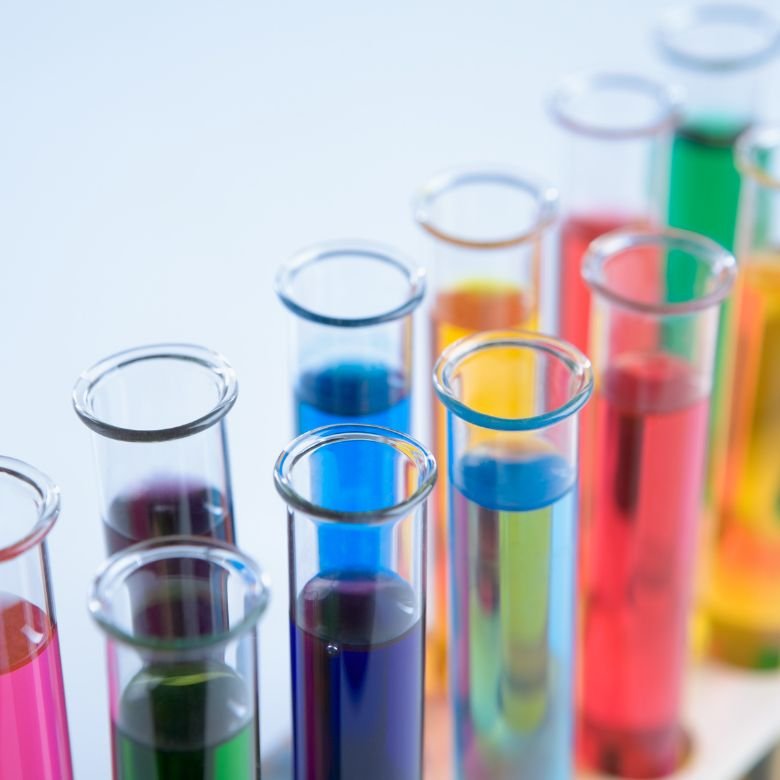Ketones are organic compounds which are derivatives of saturated aliphatic hydrocarbons. They are characterized by the presence of a carbonyl group (=C=O) in their molecules, combined with two alkyl groups. Due to their properties, ketones are important components in the chemical industry. The most important of them, acetone, has been used in the construction industry, the rubber and plastics industry, as well as in the cosmetics industry.

The structure, formulas and names of ketones
Structure
Ketones are organic compounds with a =C=O group in their structure, called a carbonyl or ketone group. Carbon in organic compounds is always tetravalent, so two alkyls are attached to the carbonyl moiety. The alkyls can be the same or different. In the first case, the general formula of the ketone is R-O-R, while in the second case it is R1-O-R2, where R stands for an alkyl group. In addition to compounds containing one ketone group, there are also compounds with two ketone groups (diketones), as well as compounds with a more complex structure. Analysing the structure of ketones, it is easy to see that one formula can be derived from propanone (the simplest ketone, C3H6O). Similarly, it can be done from the next one, i.e. butanone. However, the next one, pentanone, has two isomers. Ketones are characterized by isomerism related to the position of the carbonyl group in the chain.
Ketone nomenclature
Ketones are derived directly from the corresponding aliphatic hydrocarbons. In the chain, two hydrogen atoms connected to a secondary carbon atom are substituted with one oxygen atom. To name a given ketone, systematic names are mostly used, but common names predominate in some cases. For example, propanone is known as dimethyl ketone because it has two methyl groups connected by a carbonyl group. Commonly, propanone is known as acetone and this name is dominant in its case. The next one, butanone, is methyl ethyl ketone. It is customary to give the names of subsequent ketones, taking into account the alkyls connected to the =C=O group. However, as the chain lengthens, the number of its isomers increases, and thus the nomenclature becomes more and more complicated.
Similarly to aliphatic hydrocarbons, alcohols or aldehydes, ketones form a homologous series. The first eight are propanone, butanone, pentanone, hexanone, heptanone, octanone, nonanone, and decanone.
Production and reactions of ketones
Ketones can be produced in one of the following ways:
- oxidation of secondary alcohols,
- hydrolysis of dihalogen derivatives,
- alkyne hydration,
- Friedel–Crafts acylation,
- specific methods for selected ketones, e.g. heating of calcium ethanoate.
The chemical reactions that ketones undergo are primarily related to the ketone group and the oxygen atom it contains. A typical feature of this group of organic compounds is exceptional resistance to oxidizing agents. But the keto group is easily reduced by various reagents, e.g. with hydrogen in the presence of catalysts. The reduction reaction in ketones is opposite to the oxidation reaction of secondary alcohols.
It is also possible to attach another compound to the ketone molecule, e.g. hydrogen cyanide. An example of a reaction in which only the oxygen atom of the carbonyl group takes part is the reaction with hydroxylamine (a derivative of ammonia). So-called ketoxime and a water molecule is released. Similar reactions are used in organic synthesis or to identify ketones. The carbonyl group does not always react directly. There are known interactions of ketones, e.g. with chlorine atoms, where hydrogen atoms connected to the carbon adjacent to the ketone group (in the alpha position) undergo substitution with formation of a chlorine derivative. Relatively readily, ketones also react with each other or with other compounds containing a =C=O group, e.g. with aldehydes. The reactivity of these compounds, e.g. condensation, is caused by the ease with which ketones are converted into unsaturated alcohols called enols.

Properties of ketones
The ketone group is responsible for their key properties. Despite the presence of a strongly electronegative oxygen atom, ketones do not form hydrogen bonds between themselves because they do not have a hydrogen atom bonded to oxygen. They can form hydrogen bonds only with water molecules. This directly affects their high boiling points. However, these temperatures are lower in comparison to the ones of corresponding alcohols. Their volatility is greatly influenced by their molar mass and molecular shape. Propanone and other short-chain ketones are liquids. Those with a large number of carbon atoms are solids. It is also worth remembering that ketones do not give a positive Tollens’ and Trommer’s test. The iodoform test is distinctive to ketones.
Acetone as the most important ketone
The simplest one, propanone, commonly called acetone, is the most important representative of this group of compounds. Its other names are dimethyl ketone, dimethyl ketone or propan-2-one. The carbonyl group in this compound is linked to two methyl groups.
In the industry, acetone is obtained in large quantities by various methods. It can be obtained using the reaction of acetylene with water, followed by oxidation with the use of appropriate catalysts. Another method is based on fermentation processes of solutions containing sugars (e.g. beet sugar) with bacteria. Microorganisms carry out the butanol-acetone fermentation. In addition to acetone, this process also produces small amounts of ethanol. Large amounts of acetone are extracted from propylene in the petrochemical industry. In this process, propylene is first converted to isopropyl alcohol, which is then subjected to catalytic dehydrogenation to acetone. There is also a method of obtaining propanone from cumene (isopropyl benzene).
The importance of acetone is due to its physical and chemical properties. It is a combustible compound, miscible with water in any ratio. It dissolves very well in alcohols and other organic solvents. It is a very good solvent for oils, resins and other substances. Its relatively low boiling point makes it a volatile compound. However, it should be noted that the mixture of its vapours with air is explosive, and its inhalation is dangerous to human health. For this reason, special care should be taken when working with this compound.
Application of acetone:
- polymer processing,
- cleaning agents,
- cosmetic products,
- it can be used as a solvent,
- production and processing of rubber products,
- coatings.